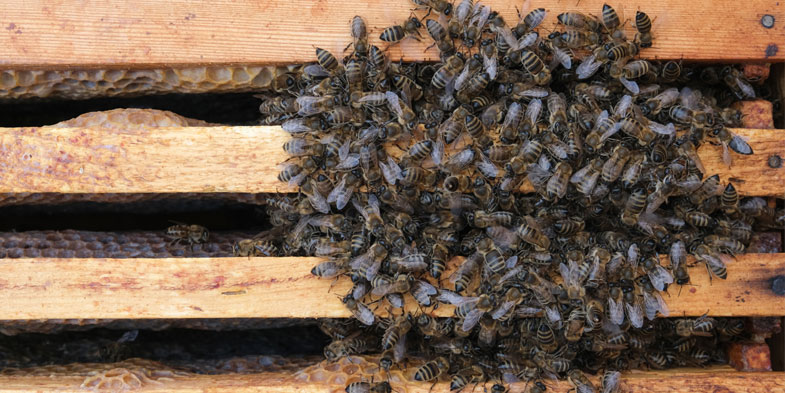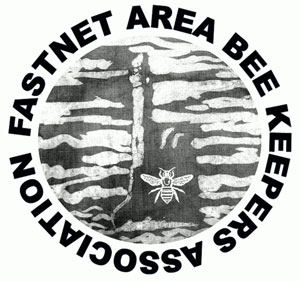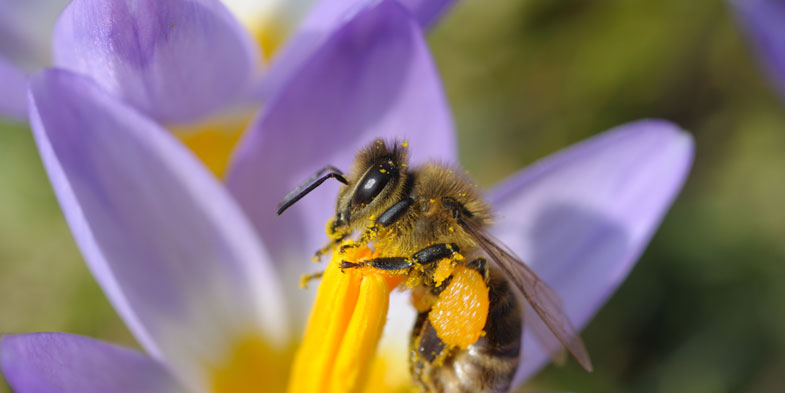Hello Beekepers!
We wish you all a very happy 2022! Hopefully the bees will furnish us with many jars of liquid gold again this year.
Firstly, I would like to thank Mary Downey and Norbert Themar for tending our FABKA apiary throughout the past few months. Their vigilant eyes and know-how ensured that the girls were secure, contented and healthy. They treated the colonies with Apibioxal in December as the mite count was high. Mary forwarded an excellent video of that exercise.
Don’t Disturb the Bees
It is very exciting to see the days lengthening, and it won’t be long now until we are donning the suits and lighting the smoker. I must admit that I miss opening the hives during the winter months but, please, do not be tempted to open and therefore disturb the colony.
Bees do not hibernate, but they do slow down their activities a lot and, as a result, need little food. They rely on the stores they collected and any food the beekeeper provided in autumn. They also rely to a large extent on their body fat which they put on in late summer. I have found that the Native Irish Bee winters better, as they require fewer stores.
As the weather cools, they form an oval shaped cluster in the hive and pack tightly together to surround the queen. Some of the bees consume food to be able to emit heat and maintain the required temperature. It stands to reason that the bees on the outside of the cluster become cold but the bees rotate positions, ensuring equal distribution of the workload.
If we remove the roof and crown board to take a ‘peep’, we upset the balance. I understand that when you start beekeeping, you’re inquisitive and think a little peep would do no harm but the hive temperature will drop, the bees will have to eat more and work more to heat the area again.
You can however check for other things:
- You can heft the hive. The more experience you get doing this the better. Maybe they seem very light. Should I give them some fondant?
- Is the hive secure and are all the ‘bits and bobs’ okay, e.g. is the roof strapped securely, and are fences intact, etc.
- Check the hive entrance.
Don’t panic if you see dead bees at the hive entrance. Okay, it might be diseased, but chances are this is just natural wastage. Any bees that die are dumped unceremoniously out of the entrance. After several weeks of bad weather it is even possible that the entrance might be blocked. Just scrape out the corpses with a tool, e.g. a long screwdriver or the like. The occurrence of population decline is completely normal.
During very cold spells the bees cannot emerge for cleansing flights (defecation flights), and sometimes for weeks at a time. They are so well evolved that their bodies have become adapted to store waste matter until the weather improves and flying is possible. The sight of flying bees around the hive is such a lovely sight and very reassuring. Again, this behaviour is not an invitation for you to have a ‘peep’.

A New Beekeeping Year
As the days lengthen some plants come into flower and, weather permitting, will encourage the bees to come out. They particularly love the early blue crocus. The flower looks much worse for wear after the bees visit, but the bee is happy and laden with goodies. Some of last year’s supply may still be ample in the hive given that the bee stored it in the cells, covered it with honey and capped it in the normal way while preparing for the winter lockdown. They love fresh pollen. The year really begins for me when I see the girls landing at the hive entrance laden down with their baskets full. I immediately know that brood is on the way and brood rearing is a most necessary requirement for the year ahead.
However, take nothing for granted. This happened to me many years ago: the bees were flying and I presumed all was well. How wrong could I have been!? Having not hefted or checked their reserves, the bees were actually on a last-ditch effort to save themselves from starvation. February and March are tricky months in that respect and I generally give the girls fondant with pollen to ensure that this never happens again. If they don’t need it they won’t use it and if they do, you might even have to repeat the procedure. I remove the roof and place the fondant on the crown board or eke opening. For those who are new to this, don’t forget to cut the plastic covering and place the open side to the hive box. Overwintered bees are very important, not only for colony survival but also for rearing more bees and harvesting the fruits of the hive.

Recipe – Pain d’épice
Thanks to Elizabeth Savage for sending us this delicious recipe to try!
A traditional French loaf with its origins in the biblical breads of honey and flour. Although leavening and spices were added over time, the simple formula does not use butter or eggs. If using a light honey try cinnamon, ginger and nutmeg instead. In Dijon, where pain d’épice is a regional specialty, the batter is aged before baking.
1 cup honey
1/2 cup sugar
1 cup hot water
2 tsp baker’s soda
1 tsp baking powder
2 tsp anise seed, crushed
1/4 tsp salt
1/2 tsp dry mustard
Grated rind of 1 orange or 1/4 cup candied orange peel chopped
2 3/4 c all-purpose flour
3/4 c rye flour
Hot milk as needed
In a large bowl, combine the honey and sugar. Add the hot water and stir until smooth. Blend in the baker’s soda, baking powder, anise, salt, and mustard. Grate the orange rind directly into the bowl so no aromatic oils are lost. Add the flours one spoonful at a time, blending to a smooth batter. Set the batter in a cool place to stand for 10 minutes or overnight. Preheat the oven to 180º F.
Pour the batter into a heavily buttered 10 by 5 inch loaf pan and bake 50- 60 minutes, until a toothpick inserted in the middle comes out clean. Remove from the oven and brush the loaf with hot milk. Cool in the pan for 10 minutes, then transfer to a rack to cool completely. Wrap well and age for a day or two before serving. The loaf will keep for weeks, due to the honey.
Tip: Delicious toasted, says Christie!
Coming Up
In the meantime, keep reading and remain enthusiastic. Our first 2022 lecture will be given by the eminent beekeeper, Mr. Brendan Murray. Brendan will be teaching us about spring management. You really should try not to miss this. He is very experienced and a wonderful lecturer. The lecture is scheduled for Wednesday February 16 2022. Our Introduction to Beekeeping Course is commencing in March and will run over 4 weeks (2 modules per evening). Any 2021 members who attended last year’s course are welcome to attend free of charge. A video link will be sent to you. We got lots of positive feedback from our 2020 students who found that being able to attend for a second time helped them greatly.
Until next time, stay safe and well and that includes the bees. All at FABKA are looking forward to meeting you soon.
Happy Beekeeping,
Mairead Love & the team at FABKA
P.S. Please check your recent emails from us if you need to renew your membership. If you have already done so, thank you very much for your support. Unfortunately, due to GDPR we must remove names and contact details of those who do not wish to renew.

